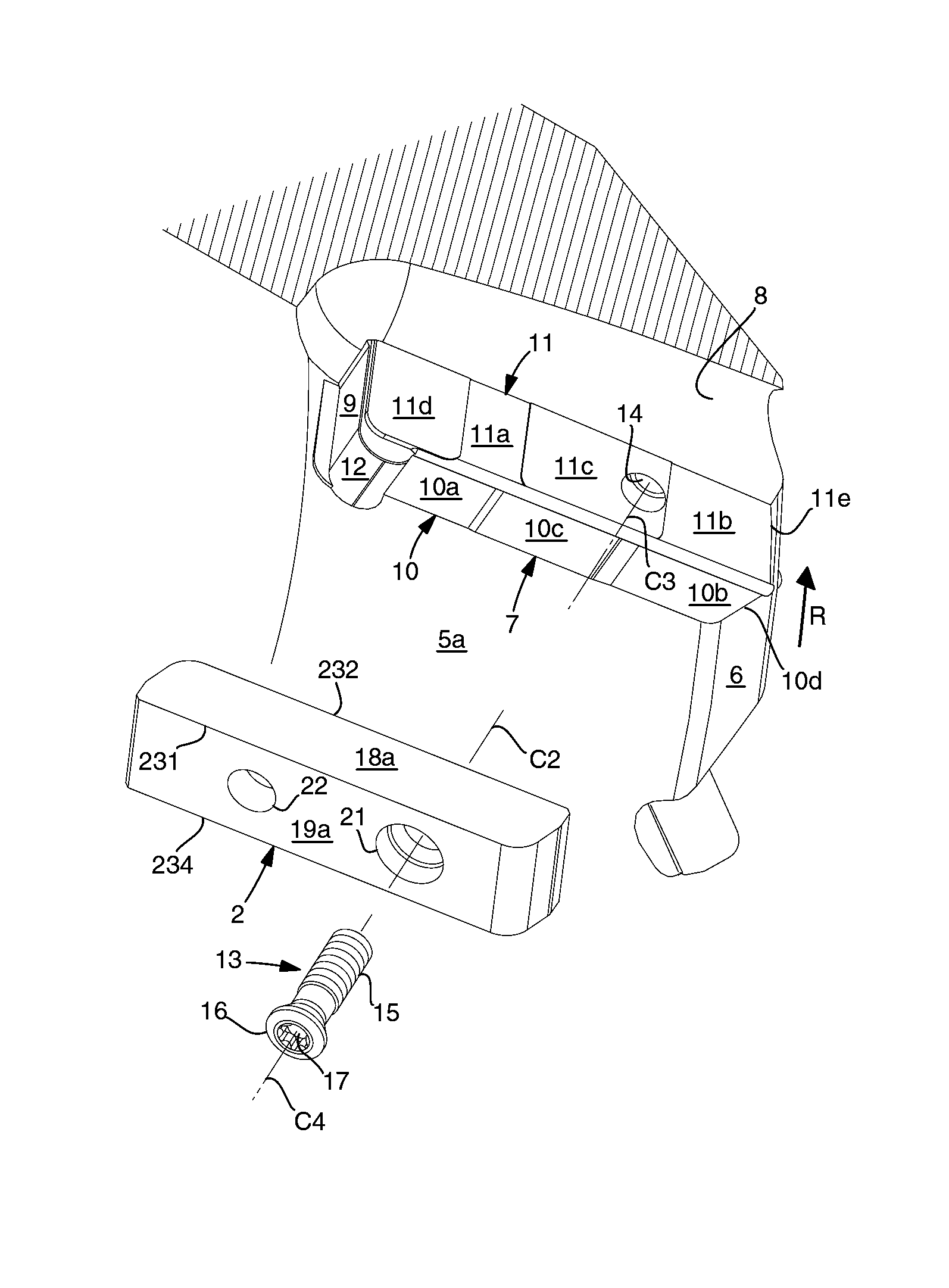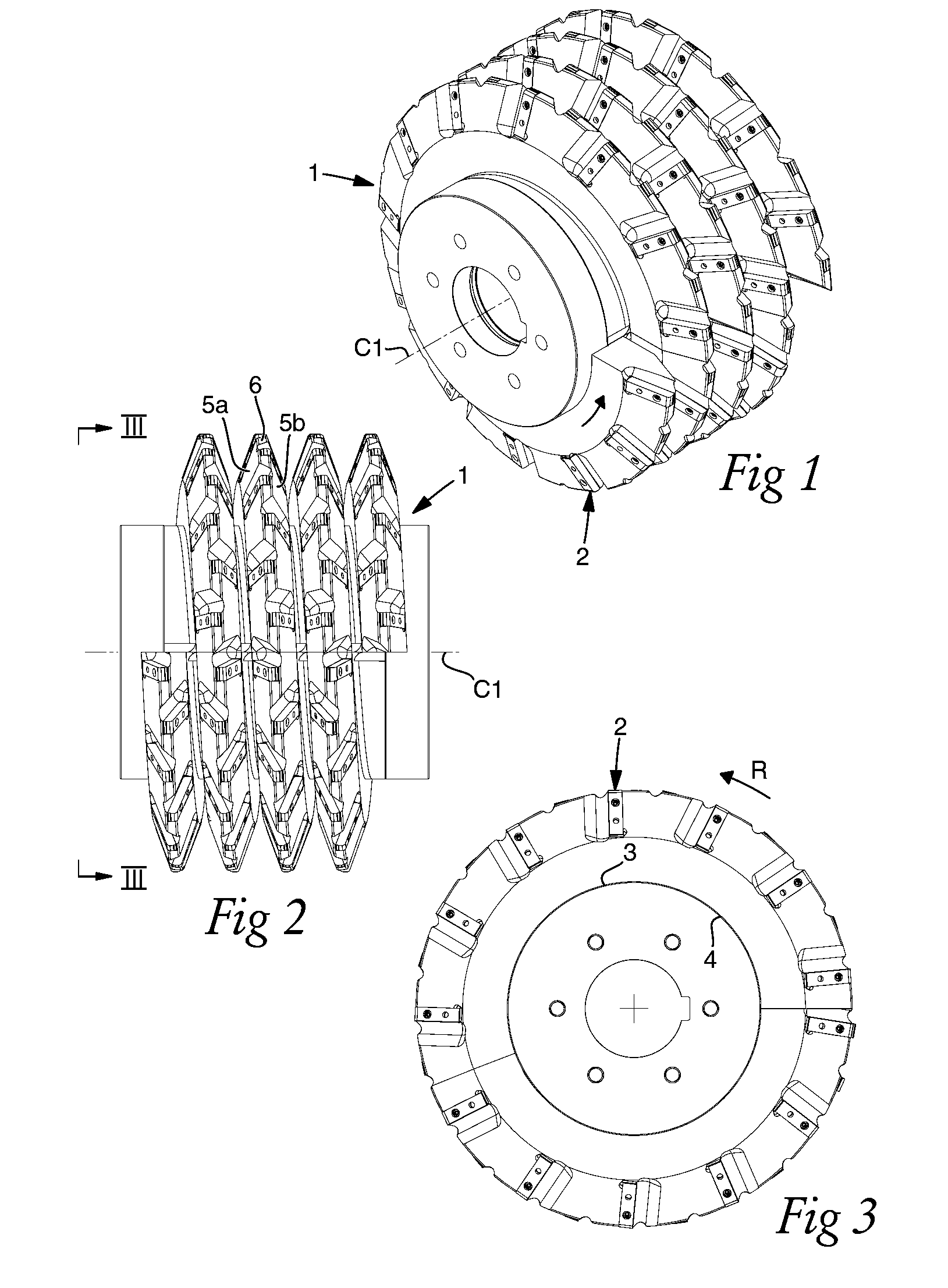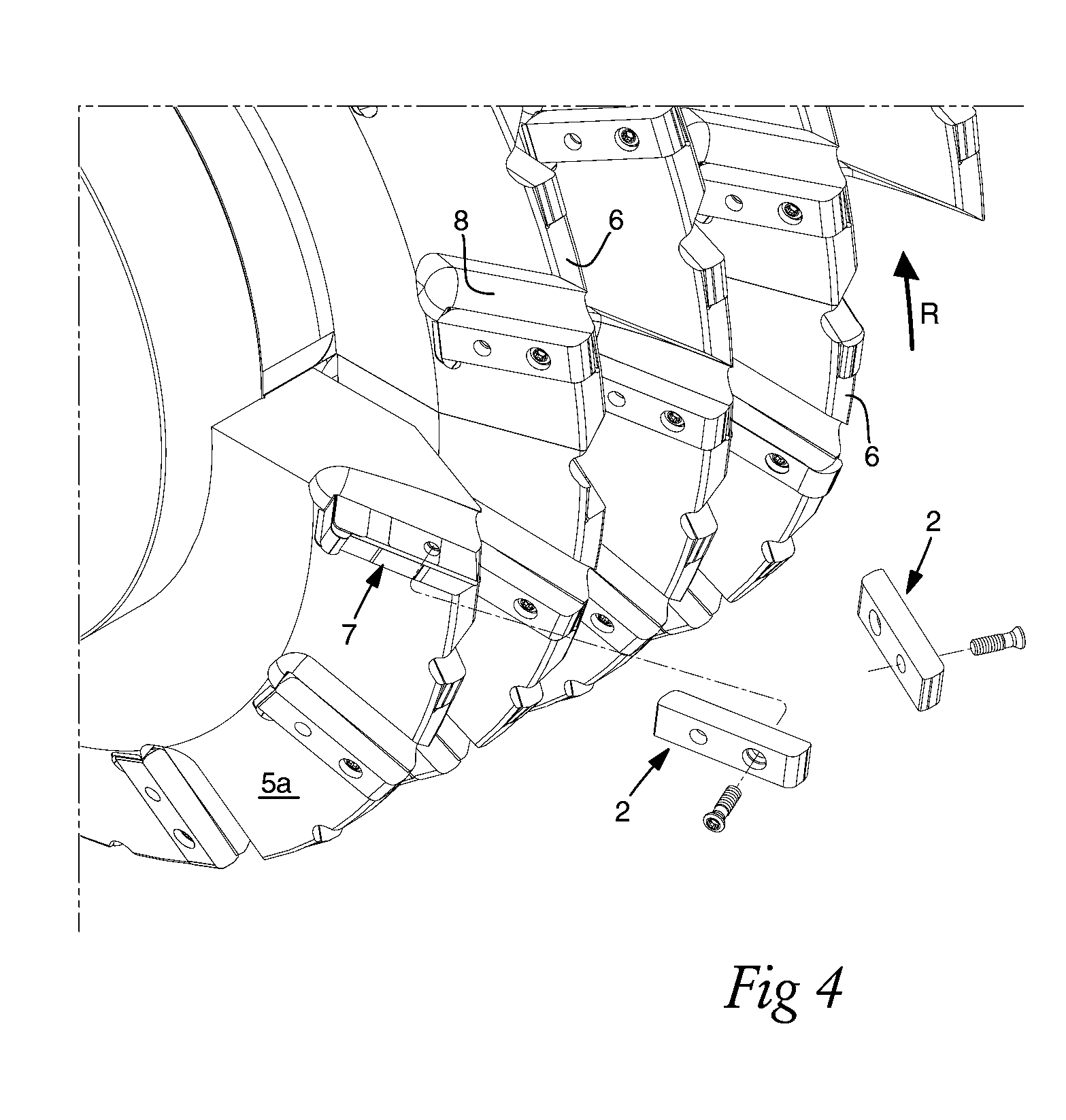Milling tool
a technology of milling tool and tool head, which is applied in the direction of manufacturing tools, gear teeth, manufacturing apparatus, etc., can solve the problems of reducing the production efficiency of hob cutters
- Summary
- Abstract
- Description
- Claims
- Application Information
AI Technical Summary
Benefits of technology
Problems solved by technology
Method used
Image
Examples
Embodiment Construction
[0048]In FIGS. 1-3, an example is shown of a milling tool according to the invention, more precisely in the form of a hob cutter, which includes a basic body in its entirety designated 1, as well as a plurality of replaceable milling inserts 2. The basic body 1 is rotatable on a centre axis C1 and includes a central core 3 as well as a peripheral cam or ring 4. In the example shown, the cam 4 is composed of a plurality of separate segments, which are mounted outside the core 3 (by those skilled in the art such tools are, therefore, denominated “segment hobs”). The radially outer part of the cam 4 includes two flank surfaces 5a, 5b, which converge toward a common peripheral transition surface 6, involving that the outer part of the cam is cross-sectionally V-shaped. Characteristic of hob cutters is that the cam is running in a helicoidal formation on the centre axis C1, more precisely at a uniform pitch. The number of turns of the screw formation should in practice be within the rang...
PUM
 Login to View More
Login to View More Abstract
Description
Claims
Application Information
 Login to View More
Login to View More - R&D
- Intellectual Property
- Life Sciences
- Materials
- Tech Scout
- Unparalleled Data Quality
- Higher Quality Content
- 60% Fewer Hallucinations
Browse by: Latest US Patents, China's latest patents, Technical Efficacy Thesaurus, Application Domain, Technology Topic, Popular Technical Reports.
© 2025 PatSnap. All rights reserved.Legal|Privacy policy|Modern Slavery Act Transparency Statement|Sitemap|About US| Contact US: help@patsnap.com



